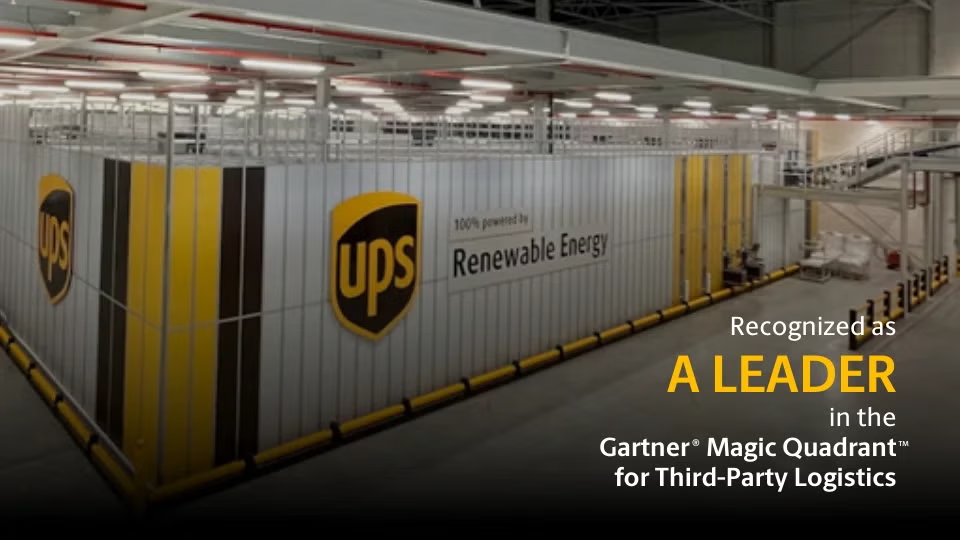Driving Operational Resilience through Service Parts Logistics: Speed, Visibility and Sustainability
As we approach 2026, the importance of Service Parts Logistics (SPL) is more critical than ever. In a world where downtime can derail operations and damage reputations, SPL is the key to keeping equipment running, revenue protected and sustainability goals on track.
In 2025, Service Parts Logistics (SPL) has shifted from a tactical necessity to a strategic cornerstone. With global supply chains still navigating post-pandemic disruptions, geopolitical uncertainty and climate-related risks, businesses are investing in SPL to ensure uptime, customer satisfaction and environmental accountability. The SPL market is projected to reach ~$61.12 billion by 2030, growing at a compounded annual growth rate (CAGR) of 4.43%1. This article explores why SPL is essential for operational resilience—and how speed, visibility and sustainability are shaping the future of logistics.
Why SPL Can’t Be an Afterthought Anymore
If your business depends on critical equipment—whether it’s a semiconductor fab line, a vending machine, or a server room—downtime isn’t just inconvenient. It’s expensive, disruptive, and potentially damaging to your brand. SPL has become a boardroom-level priority, directly influencing revenue, customer experience and ESG performance.
1. Downtime Is Expensive, Expectations Are Rising
Every hour of equipment downtime can cost thousands in lost productivity and customer trust. The COVID-19 pandemic exposed vulnerabilities in just-in-time models, prompting a shift toward resilient, just-in-case inventory strategies2. Today’s customers expect same-day or next-day delivery, real-time tracking and proactive service updates.
2. SPL Drives Performance, Not Just Parts
Modern SPL goes beyond delivering components—it powers predictive maintenance and asset optimization. AI and IoT tools help companies anticipate failures, reduce unplanned downtime and extend equipment lifecycles.
3. Sustainability and Circular Supply Chains
SPL plays a vital role in reducing Scope 3 emissions through smarter routing, reverse logistics, and refurbishment. Companies are integrating repair and recycling into their logistics networks to meet ESG goals and regulatory requirements.3
4. Reverse Logistics as a Competitive Advantage
Reverse logistics has evolved into a strategic differentiator. With the global reverse logistics market projected to hit ~$778 billion, driven by eCommerce returns and sustainability pressures, efficient reverse flows are helping companies cut costs, boost customer satisfaction and support circular economy models.4
5. Transportation Integration Is a Must-Have
Transportation is now viewed as a strategic asset. In 2025, 81% of companies view transportation as a competitive differentiator6. SPL providers are expected to manage courier, parcel, LTL and international freight seamlessly. Generative AI is being used for route optimization, freight forecasting and load matching6.
6. Segment-Specific Challenges
High Tech: High-tech Original Equipment Manufacturers (OEMs) face intense pressure for uptime and speed. Their top SPL challenges include reverse logistics efficiency and technician productivity5.
Industrial: Industrial OEM priorities include integrated transportation and reverse logistics, with visibility and IT infrastructure as major pain points.6
Medical Equipment: Medical OEMs demand local inventory, same-day delivery and stringent quality documentation. Regulatory complexity and parts planning are top concerns7.
7. What “Good” Looks Like in SPL
- Speed: Same-day/next-day delivery with real-time ETAs
- Visibility: Unified dashboards and predictive alerts
- Sustainability: Reverse logistics and refurbishment
- Technology: AI-driven planning, IoT integration and mobile workflows
SPL Is the Backbone of Uptime—Are You Ready?
SPL isn’t optional—it’s essential. Companies that invest in resilient, tech-enabled and sustainable SPL networks will outperform competitors in uptime, customer satisfaction and cost control. The best SPL partners deliver speed, visibility and circularity.
If your business can’t afford downtime, it’s time to rethink your service parts strategy. And UPS SPL is already ready. Let’s talk.
About UPS Service Parts Logistics
UPS Service Parts Logistics stands apart with customer-centric technology and service offerings that go beyond basic fulfillment. Whatever your global challenges and goals, we have the network, technology and people to help you meet your goals while getting critical equipment back up and running fast.
- Same- and next-day critical parts fulfillment
- Parts planning and inventory optimization
- Integrated Transportation Management
- IOR/EOR services
- Reverse logistics and test/repair services
We manage nearly 4 million critical orders annually through 850+ field stocking locations, serving customers in over 125 countries across industries including networking, semiconductors, industrial equipment, point-of-sale systems and medical devices.
If your equipment is critical, your logistics partner should be too. UPS SPL is Already Ready to help you reduce downtime, improve performance and future-proof your operations.
Sources
[1]: Spare Parts Logistics Market Size & Forecast
[2]: EY: How COVID-19 Impacted Supply Chains
[3]: BestDevOps: Top AI Predictive Maintenance Tools 2025
[4]: Green Logistics: Sustainable Logistics Trends 2025
[5]: PTS Corp: Reverse Logistics Insights 2025
[6]: Descartes: 2025 Transportation Management Benchmark Survey
[7]: IQVIA: Ten MedTech Trends to Watch in 2025
More from UPS Supply Chain Solutions

UPS Supply Chain Solutions Recognized as a Leader for Third-Party Logistics
Recognized for our Completeness of Vision and our Ability to Execute, UPS Supply Chain Solutions is positioned as a Leader for the sixth time.

Service Parts Logistics
UPS spare parts logistics services delivers anywhere you do business with our 850+ global field stocking locations (FSLs) and efficient same and next-day transportation.

Warehousing and Distribution Services
Our Warehousing and Distribution services with staffing expertise, facilities infrastructure and supply chain technology can help to re-balance your operations to achieve your goals.